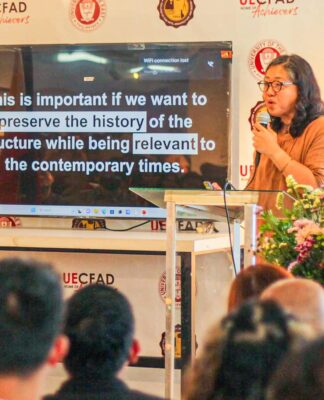ONLY four years since the Reserve Officers’ Training Program (ROTC) was made optional due to complaints of irregularities and abuses, a Senate bill and a counterpart House bill seek to reimplement a mandatory ROTC.
Both bills argue that since the enactment of Republic Act No. 9163, or the National Service Training Program (NSTP) in 2001, the ROTC enrollment has dropped from 250,000 to 80,000 in the national level. Without further explaination, Lim declares that patriotism is dying in the country.
Lim, the former Manila mayor who has a record of marking out the houses of alleged drug-peddlers before they are proven guilty, said in his bill’s explanatory note that the statistics indicate that “either the government has not inculcated the proper attitude to the youth to imbibe patriotic ideals and love of country or that many young students simply are not prepared to defend their motherland when the time comes to do so.”
There are two things to be said about about Lim’s claim. First, it confuses military service with patritism, and second, it is alarmist.
If Lim apparently associates military with patriotism, then what about most of our national heroes who did not perform any form of military service? Does it follow that they were unpatriotic? What about our overseas workers who are often touted by the government, of which Lim is a functionary, as “bagong bayani?” To be sure, it is not only through the ROTC that young Filipinos express their patriotism and build up discipline, as opposed to the claim of Rep. Eduardo Gullas (Cebu), author of the counterpart House bill 5460, that the ROTC is the “most effective tool to develop the ethics of service, discipline and patriotism among the youth.” Patriotism can also be expressed by the youth through the Literary Training Servcice (LTS) and Civic Welfare Training Service (CWTS) of the NSTP. But Gullas calls these programs “superfluous.”
But judging from the degenerate record of the past mandatory ROTC and the fruitful output of the NSTP, the reverse may be true. Lim and Gullas seem to equate patriotism with corruption, indiscipline, and, judging from the brutal killing of Mark Chua by ROTC cadet officers themselves—murder and violence. The claim of Lim and Gullas that the big drop of students enrolling in ROTC has terrible effects on the country’s security is alarmist. Lim himself says 80,000 freshman enroll each year in the ROTC despite its non-compulsory nature. The number is not small considering that the regular armed forces number only a little higher at 100,000 troops. This means that 80,000 reservists are yearly added to the reserve pool that supports a sturdy army of 1 million troops. That is a terribly high number of troops and reservists.
And what about ROTC graduates during the time it was compulsory? These graduates have been added to the reserve pool and they remain in fighting form and of fighting age. Surely, the rest of the pool now number to hundreds of thousands.
In the University alone, data from the UST Department of Military Science and Tactics suggest that there has not been a significant decline in the number of ROTC cadets in the past six years. The numbers fluctuate between 2,878 to 1,098. Although most students prefer to enroll in either the LTS or the CWTS, which has an average of 3,000 enrollees per semester, the ROTC program gets a third of that number since 2004. Not bad at all.
But if students find it better to enroll in CWTS and LTS than in ROTC, it is not for of lack of patriotism. It is to make a statement against ROTC and its twisted sense of patriotism.
What is the best manifestation of this twisted sense of patriotism? Two words: “Mark Chua.” It was Chua who blew the lid off the ROTC and exposed its corruption and violence, an expose that this paper dutifully reported and recorded for posterity. Chua got killed for his courage. As far as many people are concerned, Chua did a heroic thing. He is a hero. Therefore, restoring the compulsory ROTC is not only unpatriotic. It’s adding insult to injury.

















